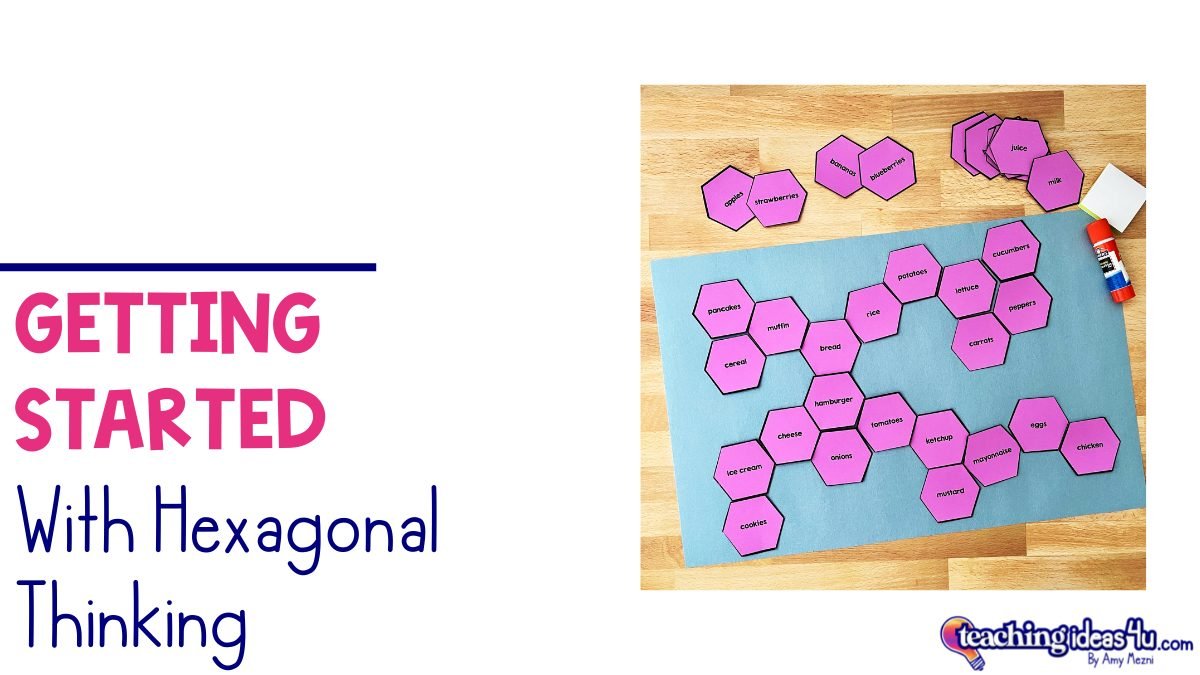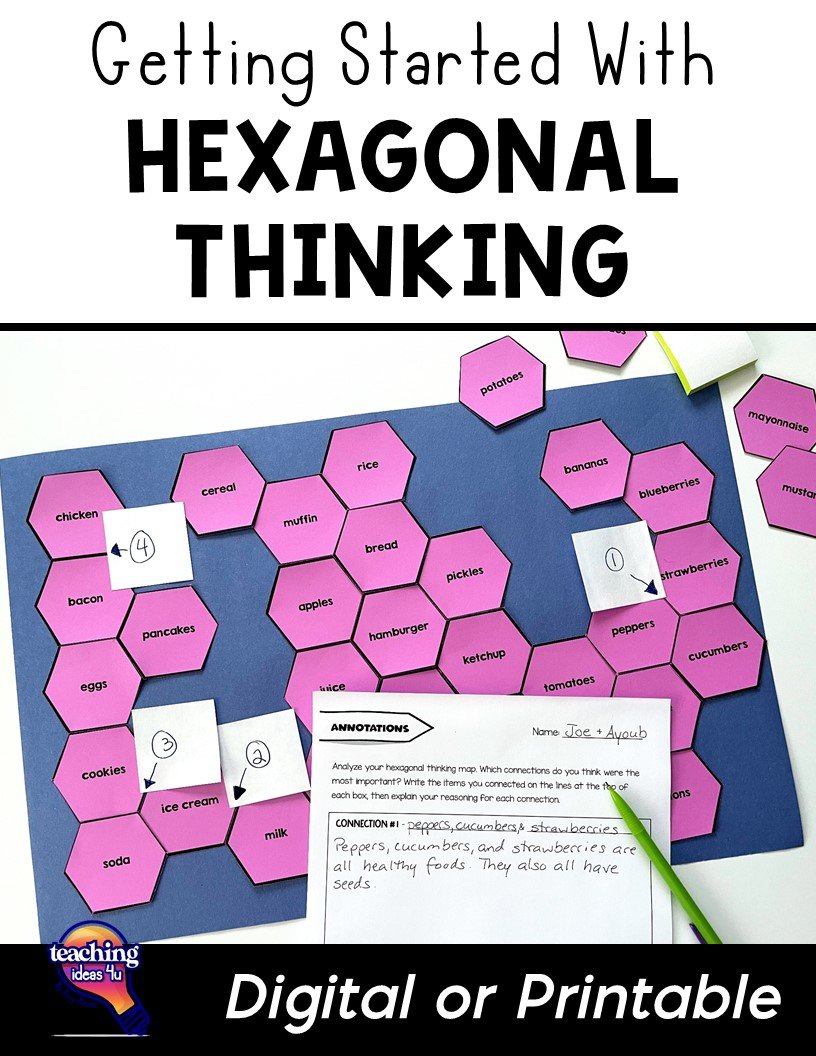Getting Started With Hexagonal Thinking
Have you heard of hexagonal thinking? It has been around for a while, but it has recently become popular with teachers. Hexagonal thinking is an activity that allows individuals and teams to think about what they have learned and to make connections between ideas. This activity could be used as a review at the end of a lesson or unit, as well as a formative or summative activity. This activity uses all modalities (visual, kinesthetic, and auditory), which helps to increase student engagement.
Getting Started With Hexagonal Thinking
Teachers should decide before the activity whether they would like students to create permanent webs or temporary webs. Permanent webs are glued down on a piece of paper and saved. Temporary webs are laid out on a surface but cleaned up at the end of the class. Students could take a photo of the web before cleaning up to submit their work. For this option, I recommend laminating the hexagons for durability. Students could work individually or in a team. Each individual worker and team receives a set of hexagons to use. Teachers can give students blank hexagons and have them decide which key ideas to write on each one or print the hexagons with terms on them (included in this resource.)Teams should review the terms and discuss how they connect. As they discuss these ideas, they should place the hexagons in connecting webs. (Each hexagon could connect to six other terms.)After teams have created a web, they should continue to evaluate their decisions and move terms around until they believe they have made the strongest connecting web possible. Once the team is satisfied with their web, they should number the strongest connections and elaborate their reasoning for those connections.
Ideas For Use
Hexagonal Thinking can be completed with different requirements:
Students could use the hexagons to make linear connections with different branches.
Students could use a main hexagon and connect as many terms to it as they can (like a flower.)
Teachers could have students create a hexagonal web after lesson one and save it. After each lesson, teachers could have students add new terms to their web.
Assessing The Activity
Teachers can assess the hexagonal webs in different ways.
Grade each team’s discussion of the terms. (Teachers should circulate to each group as they work.)
Grade the completed webs based on how many connections were made.
Grade students’ written or recorded explanations of the connections.
Have students evaluate how their team worked together to complete the project.
Differentiation
This activity can be differentiated easily:
Teachers could change the number of terms students are given.
Teachers could reduce or increase the number of hexagons students need to connect.
Teachers could require students to provide supporting evidence in their explanations.
Teachers could reduce or increase how many connections students need to explain.
Students could record their analysis of the connections using a program like Flipgrid instead of writing them.
Free Hexagonal Thinking Activity
I love hexagonal thinking activities! To make it easy for you to try them with your students, I made this hexagonal thinking activity for you - FREE!


